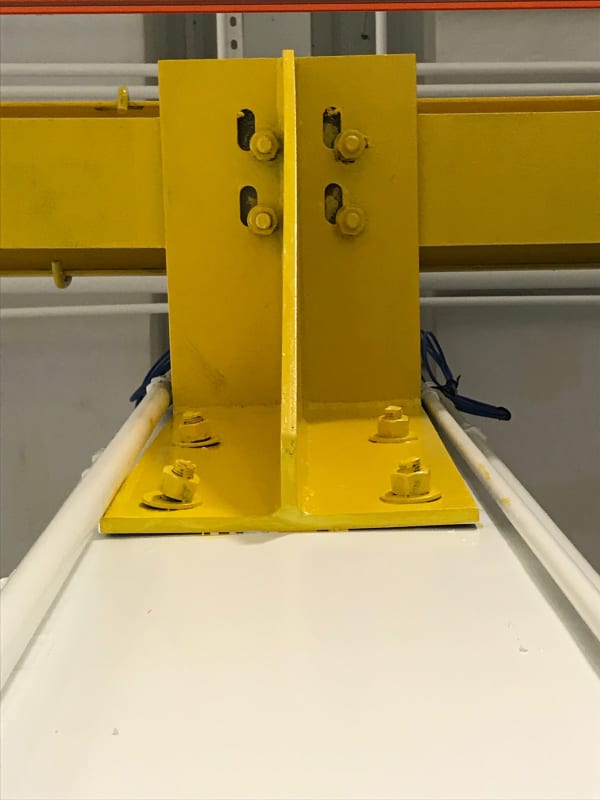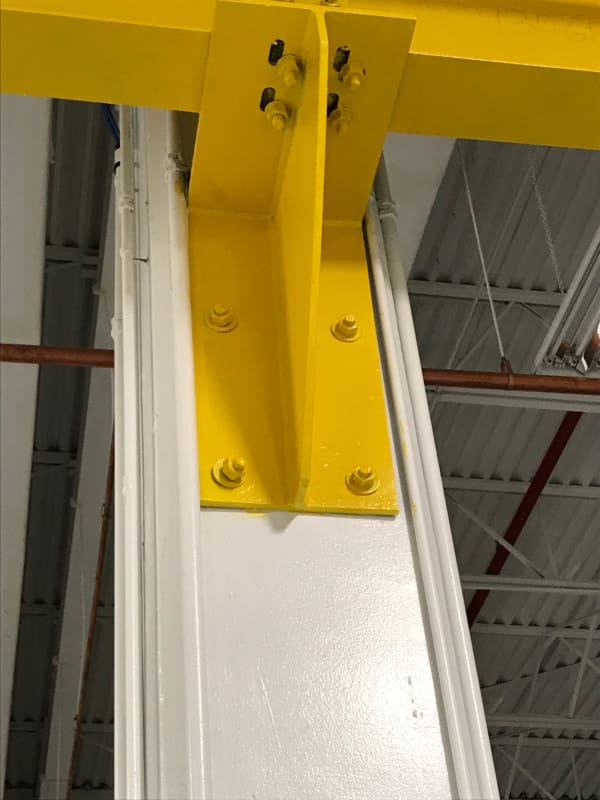There is a difference when the angle is turned to the edge of the concrete column or to the inside part. When it's turned to the inside part, the basic problem is about embedment lost and of moment forces working on the edge of the wedge anchor rather than a simple tension force.
If we look at the direction of the wrong installed anchor, it's obvious that it's wrongly directed. It means that the concrete edge failure will be much much lower for this particular anchor and since the way of calculating anchor is to use the weakest link and multiply by the number of anchors you can understand that the situation is not correct from the start especially if it's working on shear forces. But even on tensile forces, it looks like the end of the anchor is really on the edge of the concrete column which means the concrete cone force will be also much lower. And we don't speak about the fact it's a cut wedge anchor, so , from the start it's to short, and that it's installed with an angle of about 45 degrees, so, it's also much less deep than request...
So, that's a few of the reasons why this installation is completely wrong and should be removed and reinstalled (and check the other wedge anchors, if some are cut, you should also reject them).
Now, if you had a similar situation, with only shear forces, and with wedge anchors installed in the direction opposed to the edge (so that the end of the anchor would be further than if it was installed as it should be), then, the situation is completely different because basically, for shear forces you don't always really "need" the whole embedment depth to get the whole shear forces and, since the end of the anchor won't be closer to the edge, the reduction factor due to a bit lower embedment depth on one on four anchors shouldn't be decisive, it would perhaps reduce by 10% the capacity of one anchors on 4,about 2,5% of your entire connection...
If you got a similar situation with only tensile forces, and again a wedge anchors far from all edge or with an anchor installed towards the inner part of the column, if it's not cut, but just installed in a slightly lower depth, you can weld the part of the anchor not in contact with the profile (to avoid any moment on the edge of the anchor), and if the depth, because of the angle of installation is about 2 cm less, again you got a situation with one anchor with lower tensilve concrete cone capacity of about 15-20%. It could be acceptable even if it's not ideal. Understand that when a contractor is meeting a rebar on field, it's easy for us to explain why he has to install the wedge anchor straight but it's not always possible... then it could be the "less bad solution" and not a crucial load reduction for the connection (let's not forget that the concrete cone calculation is a very conservative one and don't take in account much of the rebars in the concrete, which means that usually, the real capacity is much higher than the calculated one)...
So, the main point about refusing anchors wrongly installed, is to understand the influence on the capacity of the connection. In your case, you should obviously require to remove all the cut wedge anchors and all the one installed in the direction of the edge.
If the contractors tells you that there is a rebar just on the spot of the wedge anchor, he should first, refill the hole drilled until the rebar with chemical anchor (the cheapest injection one you can find). Then drill a hole in the direction of the center of the column in the smallest angle possible. and then weld the "upper side" of the wedge anchor to the profile to avoid any moment on the head of the wedge anchor.
Good Luck
Regards
Eng. Yves De Lathouwer
Head of the Engineering Department
Adit Ltd



![[thumbsup2] [thumbsup2] [thumbsup2]](/data/assets/smilies/thumbsup2.gif) .
.